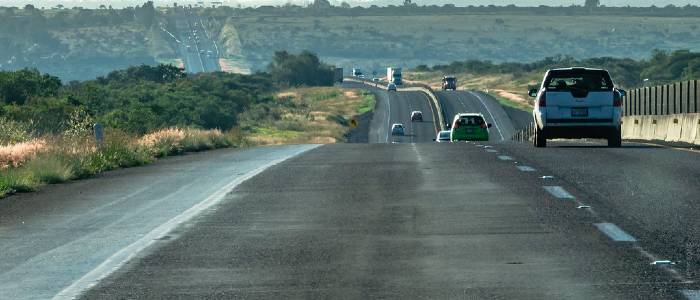
Are you thinking about driving to Mexico? Before you hit the road, make sure you have the right documents for an efficient entry process.
This guide includes all the information you need to drive to Mexico from the United States, either with your own car or with a rental car.
What Documents Do I Need to Travel to Mexico by Car?
Check that you have the right documents on hand. Here’s what you’ll need for your drive to Mexico:
- U.S. passport (or Green Card with another foreign passport)
- U.S. driver's license (or international driving permit)
- Proof of car registration
- Temporary vehicle importation permit (TVIP), if driving beyond the Hassle-Free Zone
You’ll also be asked to show:
- Mexico tourist auto insurance
- Mexico Tourist Card/Forma Migratoria Múltiple (FMM)
- Visitax, if you’re traveling to Quintana Roo
Do You Need a Passport to Drive to Mexico?
Yes, you need a valid passport to enter Mexico, whether you’re crossing from the U.S. or coming from other countries. Your passport must have at least 6 months’ validity from your planned date of entry.
While U.S. citizens can use a U.S. passport card, the full passport is recommended for international travel. If your passport is about to expire, you’ll need to renew it before driving to Mexico.

If I Travel to Mexico by Land, Do I Need Any Special Papers?
Yes, there are special papers required if you're traveling to Mexico by land, especially if you plan to drive. This includes the TVIP.
If you want to visit Quintana Roo, you’ll also need to pay the Visitax before your arrival in Mexico.
What is the Temporary Vehicle Import Permit (TVIP)?
You need a Temporary Vehicle Importation Permit (TVIP) if you plan to drive beyond the designated Hassle-Free Zone. The TVIP allows you to legally drive your vehicle in Mexico.
To get a TVIP for Mexico, you'll need a valid passport, your vehicle registration, a driver’s license, and proof of Mexican vehicle insurance.
You’ll also need a credit or debit card for payment and the required deposit, which is refunded when you leave Mexico.
Where can I drive without the TVIP?
The Hassle-Free Zone is an area along the U.S.-Mexico border where you can drive a foreign-plated vehicle without needing a TVIP.
This area extends about 12 miles from the border, making it ideal for short trips to Mexico. However, if you plan to drive farther, you’ll need to get a TVIP.
How To Prepare for Your Drive to Mexico
Getting ready to drive to Mexico from the U.S. takes a little bit of planning. Follow these steps to help you prepare:
Step 1: Gather your documents and plan your route
Make sure you have all the necessary documents. This includes your passport, driver’s license, vehicle registration, and FMM.
Decide how far into Mexico you plan to drive. If you’re traveling beyond the Hassle-Free Zone, you’ll need a TVIP.
If you’re visiting Quintana Roo (Cancun, Playa del Carmen, and more), do not forget about the Visitax.
Step 2: Purchase Mexico tourist auto insurance
Mexico tourist auto insurance is required for all vehicles in Mexico. You need it whether you’re driving your own car or a rental.
If you’re driving your own car, ask your current insurance provider to add coverage for Mexico. If you’re renting a vehicle, purchase the insurance directly from the rental agency.
Step 3: Apply for the TVIP
The TVIP is required if you plan to travel beyond the Hassle-Free Zone into Mexico. You can apply online up to 7 days before your trip.
Step 4: Prepare for your road trip
Familiarize yourself with Mexico’s driving laws and perform a vehicle inspection to check that your car is ready for the journey. It’s also a good idea to pack a roadside car kit and prepare a list of emergency contacts.
Can I Take My Car to Mexico Permanently?
If you want to take your car to Mexico permanently, there are additional steps you’ll need to follow.
The rules for permanently importing a vehicle into Mexico can vary, and you'll need to check with Mexican authorities about your car’s eligibility and the necessary procedures.
Permanent importation is more complicated than getting a TVIP, and may involve fees, inspections, and proof of ownership.


